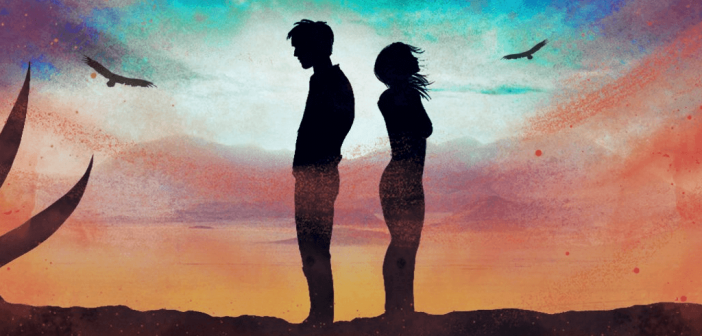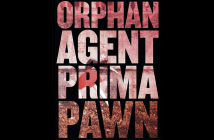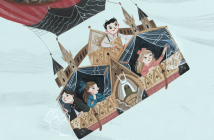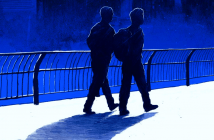My grandfather, a Mexican-American man born and raised in the Rio Grande Valley region of South Texas, loved Westerns. When I was a little girl, I remember him watching them constantly, literally for hours on end. Years later, after he’d passed away, I started to wonder what drew him these stories, in which people who looked like him and spoke Spanish like him were often (not always, but often) relegated to roles of either bumbling sidekick or bandito.
While stories about the American West have existed since people have existed to tell them, the heyday of the Western in American popular culture was probably the 1940s and 1950s, when directors such as John Ford and George Stevens put out films (usually starring John Wayne) such as , , , and . The heroes of these Westerns were white men – real men’s men, you know? – and the typical themes were man versus man (cowboy or settler fights the Indian or the bandit) and man against himself (cowboy or settler fights his fear of the unknown, his sense of uncertainty, his precarious place in this “new” world). Other groups, such as Native Americans, African-Americans, Asian Americans, Spanish-speakers, women, and young people are in these stories, but are not the heroes. More often that not, in fact, they fail to transcend stereotypes.
In his 2013 article from The Atlantic, writer Michael Agresta argues that “Westerns have earned their place at the heart of the national culture and American iconography abroad because they’ve provided a reliable vehicle for filmmakers to explore thorny issues of American history and character.” He also insists, “For a century plus, we have relied on Westerns to teach us our history and reflect our current politics and our place in the world.”
Listen. I love history, but I’m not particularly interested in what a Western can “teach” me about it. This is because I subscribe to the belief that a Western set in 1846 is really more about the values and anxieties of people (Americans, predominately white Americans) who were going about their lives in 1946. And while I certainly don’t deny that a story set in an entirely different era can grandly sweep us away to a world so unlike ours, I still think that there’s a bit (or sometimes more than a bit) of that story that remains locked into the present.
This brings us to the state of the Western in the 2017. We are moving away from the John Wayne-type as the central character and opening up the possibilities of the genre. Last year’s film focuses on modern-day economic woes, and Antoine Fuqua’s recent remake of features an inclusive cast led by Denzel Washington. And I’d even go so far as to suggest that the apocalyptic could be thrown in there. In fiction for young adults, novels such as Stacey Lee’s Under a Painted Sky, The Devil’s West series by Laura Ann Gilman, Vengeance Road by Erin Bowman, and Rae Carson’s Gold Seer Trilogy have placed teenage girls in the center of the narrative.
 I consider my newest novel, All the Wind in the World, to be a Western. It’s actually set in a future that looks a lot like the past, but as with traditional Westerns, my story features culture clashes and class clashes on the “frontier;” there’s fighting – sometimes outright with fists and weapons and sometimes subversively. The hero of my story is a mixed-race teenager attempting to work her way out of a crappy system designed to work her to death and wear her down. She’s surrounded by people like her, young people from different backgrounds and bloodlines who were born into or have fallen into a crappy system and who dream about something better. They’re not looking to “tame” the West because they are too busy trying to survive it. And because I am a person living in 2017 and an undeniable product of my time, my Western is really a story about today and who/what I think is important about today: young people and struggles with equity.
I consider my newest novel, All the Wind in the World, to be a Western. It’s actually set in a future that looks a lot like the past, but as with traditional Westerns, my story features culture clashes and class clashes on the “frontier;” there’s fighting – sometimes outright with fists and weapons and sometimes subversively. The hero of my story is a mixed-race teenager attempting to work her way out of a crappy system designed to work her to death and wear her down. She’s surrounded by people like her, young people from different backgrounds and bloodlines who were born into or have fallen into a crappy system and who dream about something better. They’re not looking to “tame” the West because they are too busy trying to survive it. And because I am a person living in 2017 and an undeniable product of my time, my Western is really a story about today and who/what I think is important about today: young people and struggles with equity.
Like my grandfather, I love old Westerns. But I’ve also learned to turn a critical eye on these stories in which people like me are often relegated to roles such as the saucy señorita or demure maiden. I agree that many Westerns reveal “thorny issues” about the American identity. I think that’s great and needs to happen more often. My hope is that the work of re-framing the West will continue (in young adult fiction and beyond), and that more figures that once were reduced to stereotypes and relegated to supporting roles, will emerge as heroes.





1 Comment
So many good points! I once read an article (can’t remember where) that explained cowboys were actually laborers, weren’t always paid very well and they even noted how the cowboys who were POCs aren’t given the credit that’s due to them, especially in westerns.
It kinda takes the magic away but it adds another interesting layer of reality. My gpa also liked westerns a lot, too.